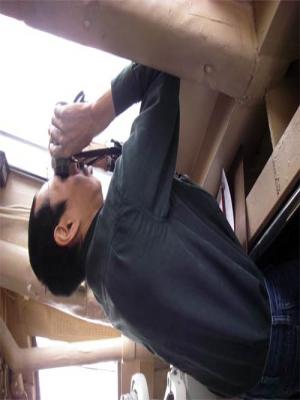I ate breakfast this morning with Lee Harris, a member of the National Marine Mammal Lab, NOAA’s ice seal team. Lee is also an Inupiat Eskimo. I enjoy listening and learning about what he says. It is obvious in the harsh Arctic environment, that Native people have the edge in making observations and finding the ice seal. After all, they have been living in the Arctic and sharing their environment with ice seals their entire life.
Lee’s village is Kotzebue, Alaska, a small town about 30 miles north from theArctic Circle. Many of the people there rely on the native animals for their food, boats and some clothing. It didn’t occur to me until I talked story with him this morning, that he had to make some major changes to his lifestyle in joining this scientific expedition.
 French Sweets
French Sweets
These French pastries are not a regular part of Lee’s diet
Take eating and diet. I piled the fresh pineapple, melon and strawberries high in my bowl, and spooned strawberry yogurt over the fruit. Two warm hard-boiled eggs gave me a little protein boost, to keep me going until lunch.
 Lee Boat
Lee Boat
Lee is quite good at driving the zodiac.
But the food on the ship is not ordinary for Lee. He told me dried caribou, seal meat, and walrus are what he enjoys. The Native Alaskan diet needs to be high in protein and energy in order to sustain their active lifestyle and brutal cold weather. High in cholesterol, unhealthy, no way! Lee has been told he is as healthy as can be by the doctor in the local clinic. By far, more healthy than some youngsters that stray from the traditional diet and consume fast foods and white sugar.
 Lee Binoculars
Lee Binoculars
Lee can spot seals really well. He knows where they hang out from experience.
I have lots to learn from Lee. His quiet way of talking and humble nature are as natural and true as the ice seals presence here in the Bering Sea.

